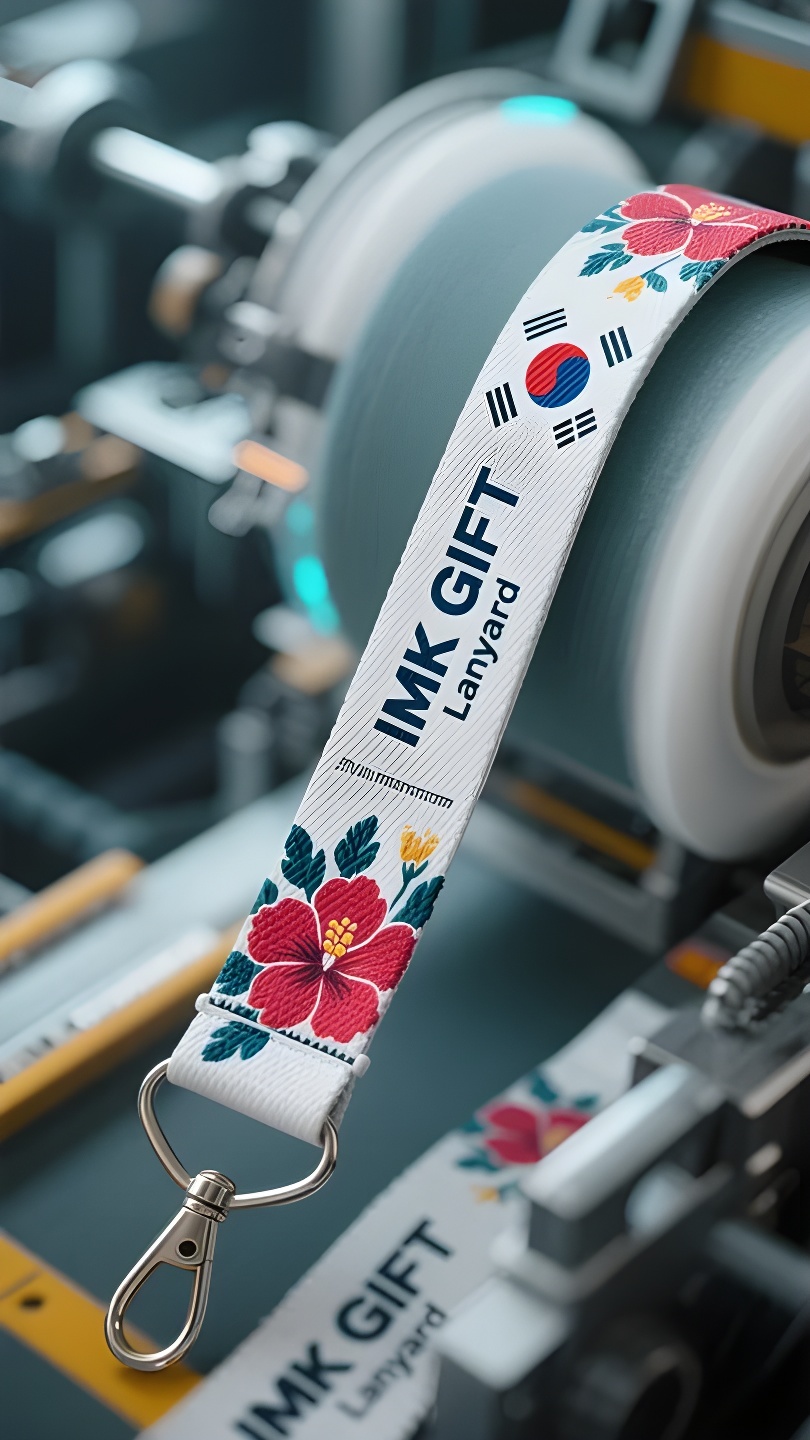in982-히비스커스-실크-리본이-산과-강을-묶는다
▼
8월 서울 거리, 태극기와 무궁화 줄은 여름 바람에 어우러져 서로를 보완합니다. 광복절을 기념하는 이 달, 태극기의 붉은색과 파란색 태극과 무궁화 줄의 비단실은 시공간을 초월하는 민족정신을 엮어냅니다. 태극기 중앙의 음양 문양은 “상생상극(相生相剋)”이라는 동양의 지혜를 담고 있으며, 이를 둘러싼 건(乾), 곤(坤), 감(坎), 리(里)의 사괘는 무궁화 줄의 직조 원리와 같습니다. 날실과 씨실이 교차해야만 도구가 될 수 있습니다. 붉고 푸른 물감으로 물든 이 비단실들은 장인의 손에서 “평매듭법”으로 반복적으로 겹쳐지며, 식민지와 전쟁의 굴레를 딛고 일어선 한국의 문화적 회복력으로 엮어낸 재탄생의 모습을 보여줍니다. 한 가닥의 명주실은 보기에는 연약해 보이지만, 삼백 가닥이 모이면 백 킬로그램의 무게를 지탱하는 밧줄이 될 수 있습니다. 이는 “온 국민이 하나가 되면 나라가 부강해진다”는 건국 이념과 은연중에 일치합니다. 현대 한국인들은 옷깃과 가방에 무궁화 꽃무늬 밧줄을 매는데, 이는 전통 공예의 유산일 뿐만 아니라 작은 공간 속의 “연결”이라는 깊은 의미를 담고 있습니다. 코로나19 팬데믹으로 경제가 큰 타격을 입었을 때, 수많은 중소기업인들은 직원들에게 끈을 달아주는 방식으로 유형의 물건을 통해 무형의 신념을 응축했습니다. 젊은이들은 거리 시위에서 끈을 매는 방식으로 백 년 전 천 조각으로 비밀 암호를 전달했던 독립운동가들의 열정을 이어갔습니다. 이 영원히 시들지 않는 명주는 역사의 긴 강물에서 뻗어 나와 모든 한국인의 운명을 민족 부흥의 날실과 씨실로 엮어내고 있습니다. 손끝이 랜야드의 선에 닿는 순간, 마치 조상들의 불굴의 의지와 현대인들의 용기가 어우러지는 듯합니다. 날실과 씨실이 교차하는 지점에서 히비스커스의 끝없는 정신을 엿볼 수 있습니다.
On the streets of Seoul in August, the Taegeukgi and the hibiscus flower hanging ropes complement each other in the summer breeze. In this month that carries the memory of Liberation Day, the red and blue Taegeuk on the Korean national flag and the silk threads of the hibiscus flower hanging ropes weave the national spirit that transcends time and space. The yin and yang pattern in the center of the Taegeukgi tells the oriental wisdom of “mutual promotion and mutual restraint”, and the four hexagrams of Qian, Kun, Kan, and Li surrounding it are just like the weaving principle of the hibiscus flower hanging rope – only when the warp and weft intersect can it be made into a tool. Those silk threads dyed red and blue are repeatedly overlapped in the hands of craftsmen using the “flat knot method”, just like the rebirth woven by cultural resilience after Korea’s baptism of colonization and war. Each silk thread looks fragile, but three hundred strands together can become a hanging rope that bears a hundred kilograms, which implicitly coincides with the founding concept of “the country will prosper if all the people are united”. Modern Koreans tie hibiscus flower hanging ropes to their lapels and bags, which is not only a heritage of traditional craftsmanship, but also a deep meaning of “connection” in a small space. When the COVID-19 pandemic hit the economy hard, countless small and medium-sized business owners gave lanyards to their employees, using tangible objects to condense intangible beliefs; young people tied lanyards during street movements, continuing the passion of independence activists who used cloth strips to pass secret codes a hundred years ago. This never-fading silk thread is extending from the long river of history, weaving the fate of every Korean into the warp and weft of national rejuvenation. When your fingertips touch the lines of the lanyard, it seems as if you can touch the perseverance of your ancestors and the courage of modern people. At the intersection of the warp and weft, you can see the endless spirit of hibiscus.
八月的首尔街头,太极旗与木槿花挂绳在夏风中交相辉映。这个承载着光复节记忆的月份,韩国国旗上的红蓝太极与木槿花挂绳的丝线,编织着穿越时空的民族精神。
太极旗中央的阴阳纹样,诉说着”相生相克”的东方智慧,而环绕四周的乾、坤、坎、离四卦,恰似木槿花挂绳的编织原理——经纬相交方能成器。那些被染成红蓝双色的丝线,在匠人手中以”平结法”反复交叠,正如韩国历经殖民与战争的洗礼后,用文化韧性编织出的新生。每条丝线看似脆弱,但三百根合股便成承重百斤的挂绳,这暗合着”全体国民合心则国兴”的建国理念。
现代韩国人将木槿花挂绳系于衣襟、包袋,不仅是对传统工艺的传承,更在方寸之间寄托着”联结”的深意。当新冠疫情重创经济时,无数中小企业主将挂绳赠予员工,用有形之物凝聚无形信念;年轻人在街头运动中系起挂绳,延续着百年前独立运动者用布条传递暗号的热血。
这团永不褪色的丝线,正从历史长河中延伸而来,将每个韩国人的命运织入民族复兴的经纬。当指尖抚过挂绳的纹路,仿佛触摸到祖先的执着与现代人的勇气,在经纬交织处,看见生生不息的木槿精神。
▼
Contact Us
📞 Tel: +0086-760-85286839
📧 Email: sales3@imkgift.com








